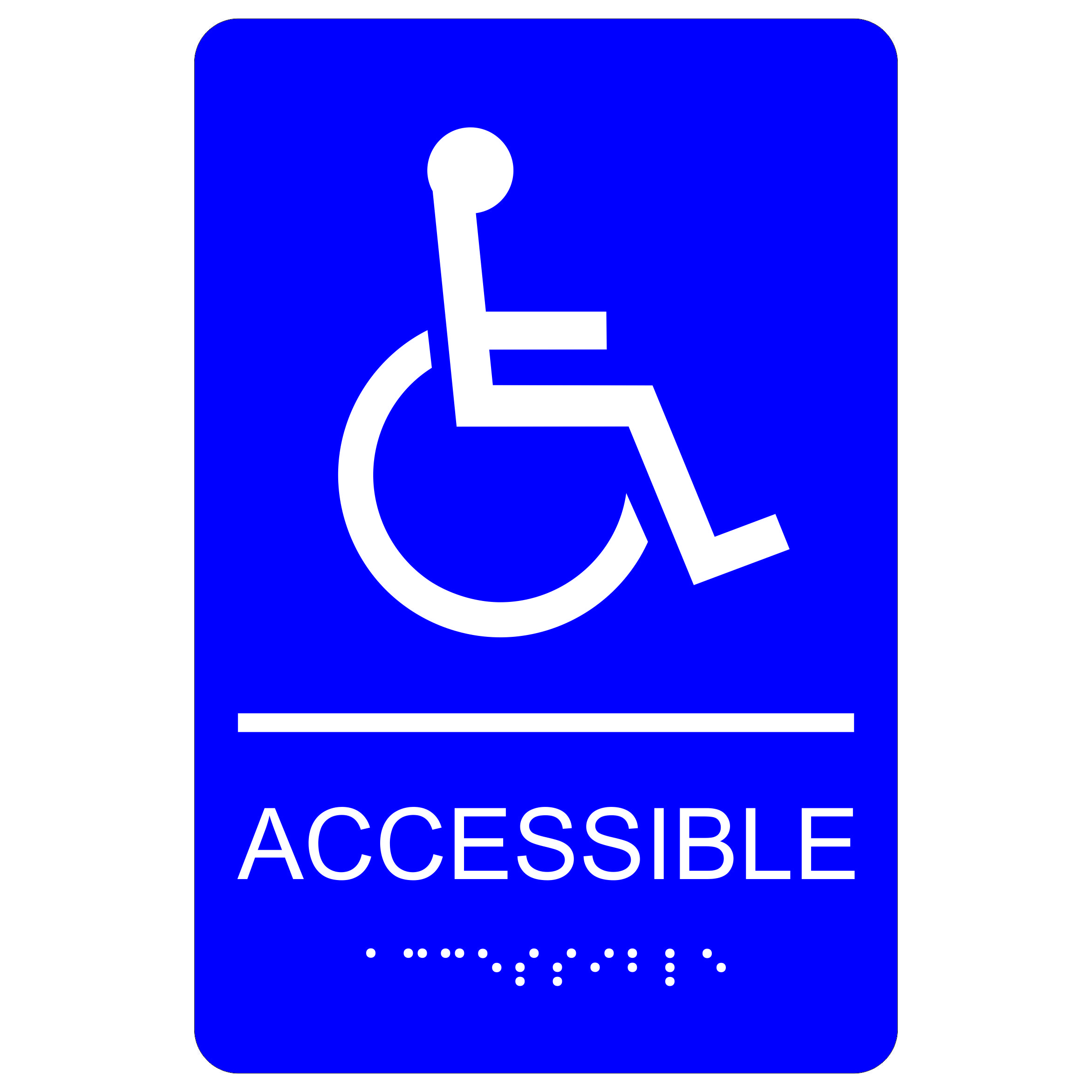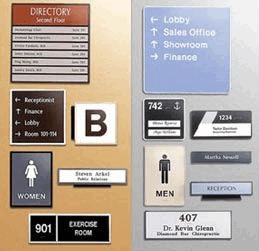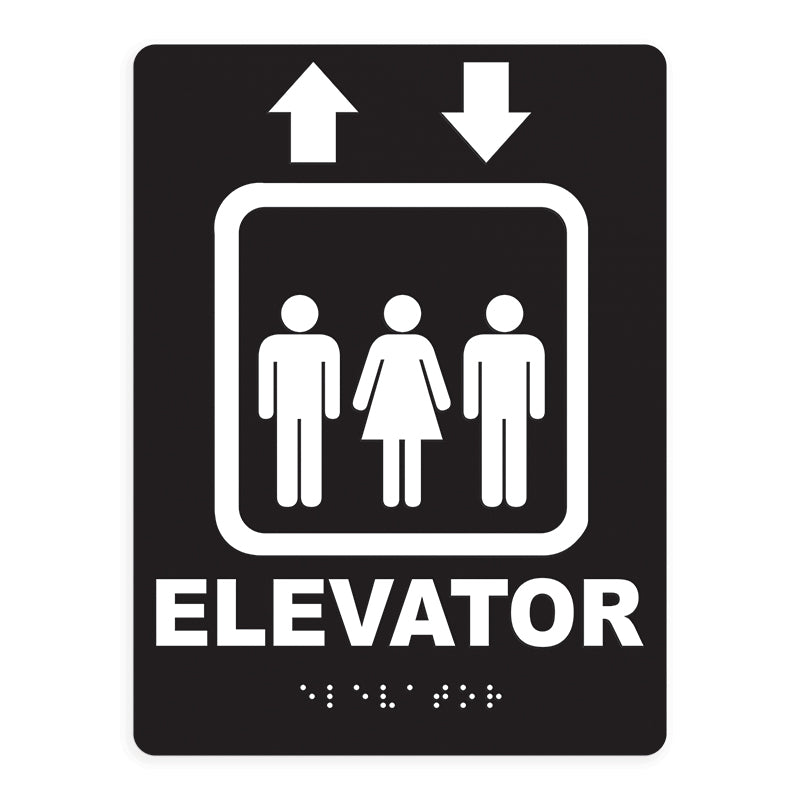ADA Signs: Crucial Devices for Inclusive Settings
ADA Signs: Crucial Devices for Inclusive Settings
Blog Article
Checking Out the Secret Functions of ADA Indications for Improved Ease Of Access
In the realm of availability, ADA signs serve as quiet yet powerful allies, making sure that rooms are inclusive and navigable for people with impairments. By incorporating Braille and tactile aspects, these indicators break obstacles for the visually impaired, while high-contrast shade systems and clear typefaces cater to varied aesthetic needs.
Value of ADA Conformity
Guaranteeing conformity with the Americans with Disabilities Act (ADA) is essential for cultivating inclusivity and equivalent access in public areas and offices. The ADA, passed in 1990, mandates that all public facilities, employers, and transportation solutions suit people with impairments, ensuring they take pleasure in the very same rights and opportunities as others. Compliance with ADA requirements not just meets legal obligations however likewise improves a company's online reputation by showing its dedication to variety and inclusivity.
One of the key elements of ADA compliance is the application of easily accessible signs. ADA signs are designed to make certain that people with impairments can easily navigate through spaces and buildings. These indications must abide by particular guidelines regarding size, typeface, shade comparison, and placement to guarantee visibility and readability for all. Properly implemented ADA signs aids get rid of barriers that people with handicaps often run into, therefore promoting their independence and confidence (ADA Signs).
Furthermore, sticking to ADA guidelines can reduce the risk of lawful repercussions and possible penalties. Organizations that stop working to adhere to ADA standards may face legal actions or charges, which can be both damaging and economically burdensome to their public picture. Thus, ADA compliance is indispensable to promoting a fair environment for everybody.
Braille and Tactile Components
The unification of Braille and tactile elements into ADA signage symbolizes the concepts of access and inclusivity. It is usually put under the corresponding text on signage to guarantee that people can access the details without visual support.
Responsive components extend past Braille and include increased characters and signs. These parts are developed to be discernible by touch, enabling individuals to identify room numbers, restrooms, exits, and other critical areas. The ADA establishes particular standards regarding the size, spacing, and placement of these responsive elements to maximize readability and ensure uniformity across different settings.

High-Contrast Color Pattern
High-contrast shade schemes play a crucial function in enhancing the exposure and readability of ADA signage for people with visual disabilities. These schemes are essential as they take full advantage of the difference in light reflectance in between text and history, ensuring that indicators are easily noticeable, even from a distance. The Americans with Disabilities Act (ADA) mandates making use of particular shade contrasts to fit those with minimal vision, making it a vital aspect of compliance.
The efficiency of high-contrast colors exists in their ability to stick out in numerous lighting problems, consisting of dimly lit atmospheres and locations with glare. Normally, dark message on a light history or light message on a dark history is employed to achieve optimum comparison. As an example, black text on a yellow or white history provides a stark aesthetic difference that aids in quick acknowledgment and understanding.

Legible Fonts and Text Size
When considering the style of ADA signage, the option of understandable fonts and suitable message size can not be overstated. These elements are vital for making certain that signs come to people with aesthetic problems. The Americans with Disabilities Act (ADA) mandates that typefaces have to be sans-serif and not italic, oblique, manuscript, very decorative, or of uncommon kind. These requirements help ensure that the message is quickly legible from a distance which the personalities are appreciable to diverse target markets.
According to ADA guidelines, the minimum message height should be 5/8 inch, and it needs to enhance proportionally with watching distance. Uniformity in text dimension contributes to a natural visual experience, assisting individuals in browsing environments effectively.
Furthermore, spacing in between letters and lines is indispensable to legibility. Appropriate spacing avoids personalities from appearing crowded, improving readability. By sticking to these requirements, developers can considerably boost availability, ensuring that signage offers its intended function for all people, regardless of their aesthetic abilities.
Reliable Placement Methods
Strategic placement of ADA signs is essential for making the most of ease of access and guaranteeing compliance with legal criteria. ADA standards state that signs should be mounted at a height in between 48 to 60 inches from the ground to guarantee they are within the line of sight for both standing and seated individuals.
In addition, signs have to be put adjacent to the latch side of doors to permit easy identification before entry. Consistency in sign positioning throughout a center enhances predictability, reducing confusion and improving general individual experience.

Conclusion
ADA signs play an essential role in promoting ease of access by integrating features that address the requirements of individuals with impairments. These aspects collectively foster a comprehensive setting, emphasizing the relevance of ADA conformity in guaranteeing equal access for all.
In the world of access, ADA indications serve as silent yet effective allies, making sure that areas are comprehensive and navigable for people with handicaps. The ADA, passed in 1990, mandates that all go to this website public facilities, companies, and transportation services suit people with specials needs, ensuring they enjoy the very same legal rights and opportunities as others. ADA Signs. ADA indicators are made to make sure that individuals with handicaps can quickly navigate with areas and structures. ADA standards state that indicators must be mounted at an elevation between 48 to 60 inches from the ground to check my reference guarantee they are within the line of sight for both standing and seated people.ADA indications play an essential function in advertising ease of access by incorporating functions that resolve the requirements of people with impairments
Report this page